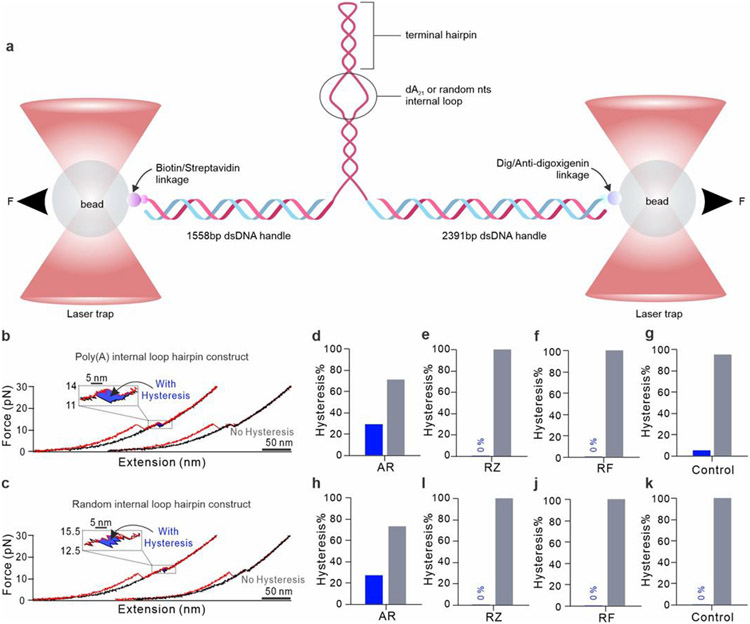Figure 6.
Determining the interactions between reaction substrates and DNA corona using single-molecule force spectroscopy. (a) Schematic of an optical-tweezer setup. The DNA corona connects to two DNA handles which are tethered by 1064 nm laser-trapped beads through the biotin/streptavidin links (see Supporting Information and reference23 for details). (b-c) Examples of FX curves for the AR and DNA hairpin interactions. DNA unfolds as the tensile force accumulates (red traces) and refolds after the force is released (black traces). A hysteresis may exist as the DNA-bound substrate delays the refolding (see blowup insets). Percentages of molecules that show hysteresis in FX curves for various substrates interacting with the DNA construct with poly(A) (d-g) and a random sequence (h-k) in internal loops. A total of 17 DNAs were measured. Control means no substrate.

